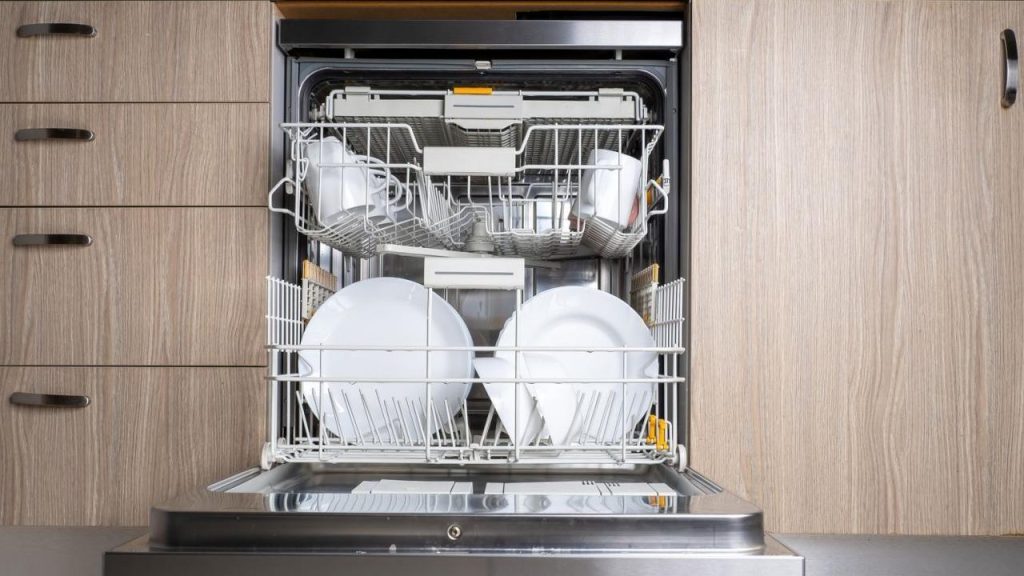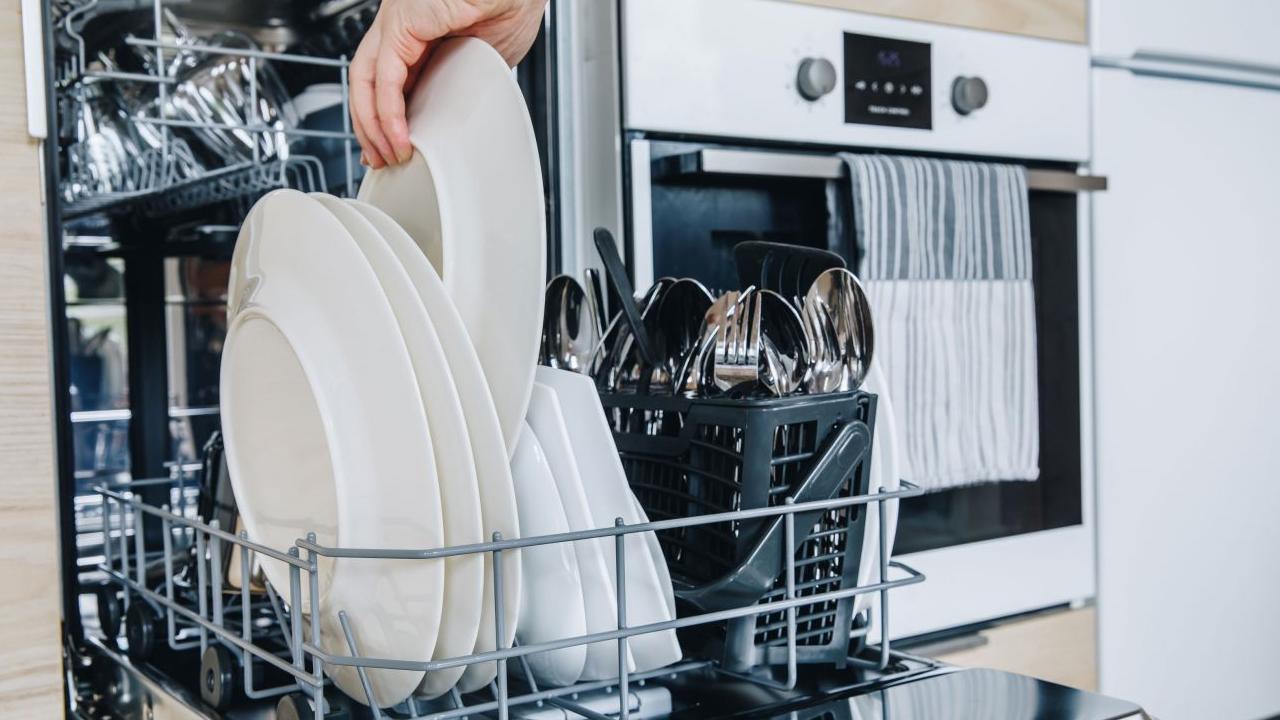It’s frustrating when you open your dishwasher at the end of the cycle only to find the dishes are still wet. Proper drying is an essential function of a dishwasher. So what causes drying issues and how can it be remedied?
There are several possible culprits if your dishwasher is leaving dishes dripping wet after the cycle finishes. Read on to learn the common reasons why dishwashers fail to dry along with solutions to get your dishes coming out perfectly dry again.

1. Low Rinse Aid
Rinse aid is an important additive that improves drying by allowing water to sheet off the dishes rather than cling. If your rinse aid reservoir is empty or low, moisture is left behind rather than evaporating.
Signs that insufficient rinse aid may be the cause of wet dishes:
- Dishes and flatware have excessive water droplets clinging when the cycle ends
- Water stains or spots are left behind on glassware
- Plastic parts have a cloudy look from remaining moisture
Check the rinse aid container and refill if needed with a rinse aid made for dishwashers. Be sure to aim the nozzle opening toward the dishes. This provides the right coverage of rinse aid.
2. No Heated Dry Cycle
Many modern dishwashers have a distinct dry cycle that uses either a heating element or a fan to actively speed up drying at the end of the wash. If this heated drying cycle isn’t selected, dishes don’t get a chance to dry.
Clues that lack of a drying cycle may be to blame:
- Dishes seem fully washed but just wet from no powered drying
- The selected wash cycle doesn’t include any drying
- Manually starting a dry cycle after washing dries the dishes
Choose wash cycles with “heated dry”, “fan dry”, “turbo dry”, or similar in the cycle name to get fully dry dishes. Avoid options like “eco” or “light” wash that skip the powered drying.
3. Vent Blocked By Debris
For moisture to properly vent out from the tub, the dishwasher vent must be clear. If lint, crumbs, labels or other debris block the vent, it affects air circulation and drying performance.
Signs of a possible blocked vent:
- Dishes are damp from steam not releasing
- Musty odor inside dishwasher
- Debris visible blocking vent opening
- Long drying time at the end of the cycle
Remove debris from the outside vent cover. Check for obstructions in the vent tube going to the dishwasher base and clear as needed to restore proper airflow.
4. Wire Vent Rack Misaligned
Some dishwashers have an internal wire “turbidity” rack by the vent that distributes moisture and improves airflow. If this vent rack gets shifted out of position, it can hinder moisture removal.
Symptoms that point to a shifted vent rack:
- Dishes right by the vent stay very wet
- Vent rack is visibly shifted to one side
- Steam seems concentrated in one area
Open the dishwasher tub and align the wire rack evenly across the vent. Make sure no dishware is blocking the rack from the vent opening.
5. Door Alignment Off
In order for the dishwasher to operate optimally, the door seal must make complete contact when closed. If misalignment prevents full door sealing, moisture leaks out and affects drying.
Signs of possible door seal issues:
- Dishes near the edges stay very wet from moisture escape
- Door doesn’t close properly or pops open during cycle
- The door seems warped or crooked on the dishwasher
Inspect the door seal and hinges. Adjust if needed to get even contact and sealing. Add furniture shims under the dishwasher to level it if required.
6. Heating Element Not Working
For dishwashers with a heating element to actively dry dishes, failure of the element prevents dishes from getting fully dry. The element burns out over time from normal wear and tear.
Problems that point to a bad heating element:
- Dishes remain wet after a fully heated dry cycle
- The heating element doesn’t appear to be working
- Dishes air dry if left in tub but no active drying
Have a technician test the heating element with a multimeter. If defective, install a new heating element with the exact electrical specs for your model.
7. Drying Fan Not Spinning
Some dishwashers rely on a fan to circulate air rather than a heating element. If this drying fan fails, moisture can’t effectively evaporate.
Signs of a non-working drying fan:
- Lack of airflow at the end of the cycle
- The drying fan doesn’t run even when activated
- Electronics seem to work but dishes won’t dry
First check for obstructions like utensils blocking the fan blades. If clear but not spinning, the fan motor likely needs replacing by an appliance repair technician.
8. High Mineral Content In Water
Hard water with high levels of minerals can leave deposits behind that cling to dishes and prevent proper drying. Over time, buildup on spray arms can also diminish cleaning performance.
Indications that hard water may be the problem:
- White film or chalky residue left on dishes
- Spotting and cloudiness on glassware
- Mineral buildup clogging spray arms or fill valve
Try adding a dishwasher cleaner monthly to remove mineral buildup. Install a home water softener or inline water softening pellets to reduce the effects of hard water if needed.
When to Call a Repair Service
If inspecting these common issues doesn’t reveal an obvious cause or you’re unable to resolve the problem, don’t hesitate to bring in a professional:
- Appliance technicians have specialized tools to diagnose issues
- They can check if electrical parts like heating elements need replacing
- Adjusting door alignment may require an expert
- They have training to safely disassemble and properly clean interiors
Dishwasher repair services can get your appliance drying effectively again, whether it requires a small adjustment or full part replacement. Don’t tolerate frustration over dripping wet dishes – call for service and get it fixed!
Preventing Future Drying Problems
To avoid recurring dishwasher drying problems, be diligent about care and maintenance:
- Clean door seals regularly to prevent mold and debris buildup
- Use rinse aid and dishwasher cleaner for mineral deposit prevention
- Don’t overload dishwasher in ways that block spray arms
- Promptly repair any leaks to prevent moisture-related damage
- Clean out interior filter as recommended to maintain performance
With proper use and care, your dishwasher should dry dishes effectively for years. But if drying troubles do pop up again, you now know the likely causes and fixes to get your dishes coming out dry once more!




Leave a Comment